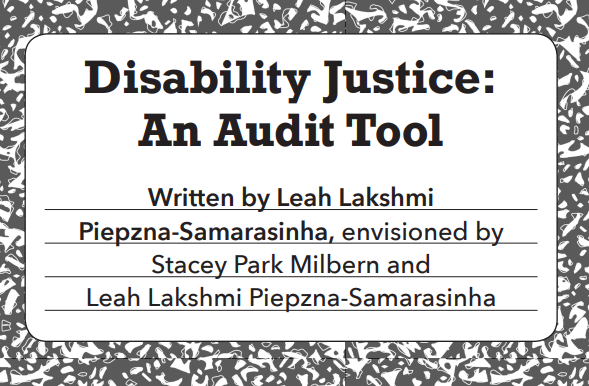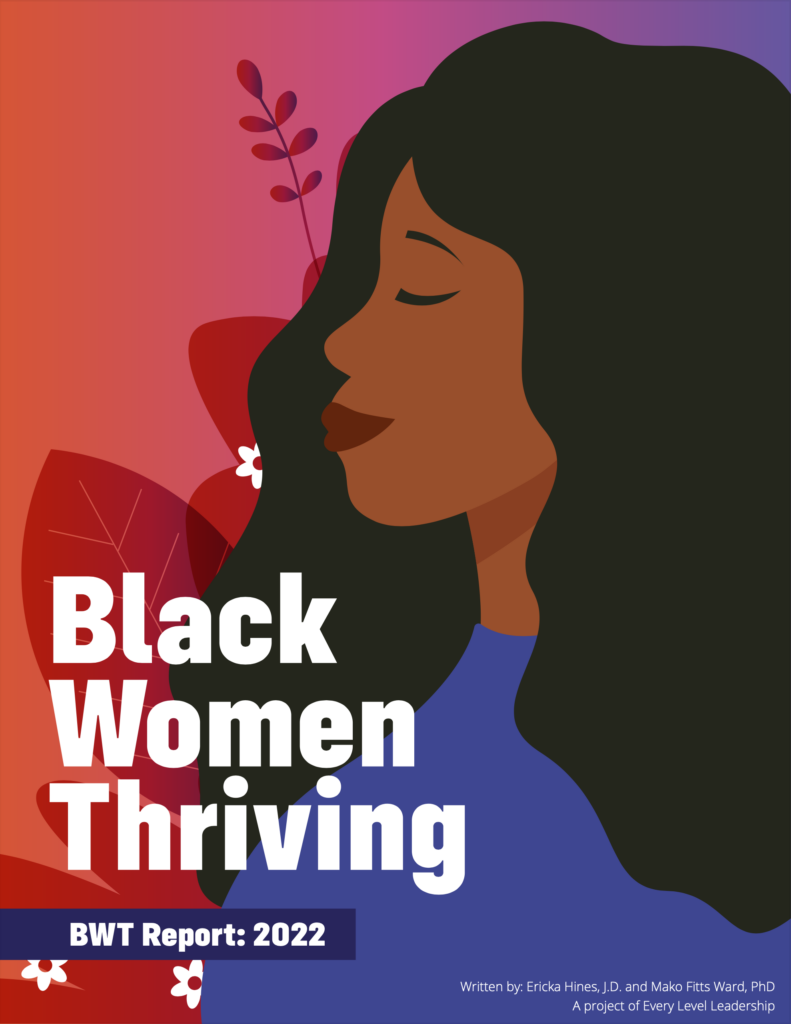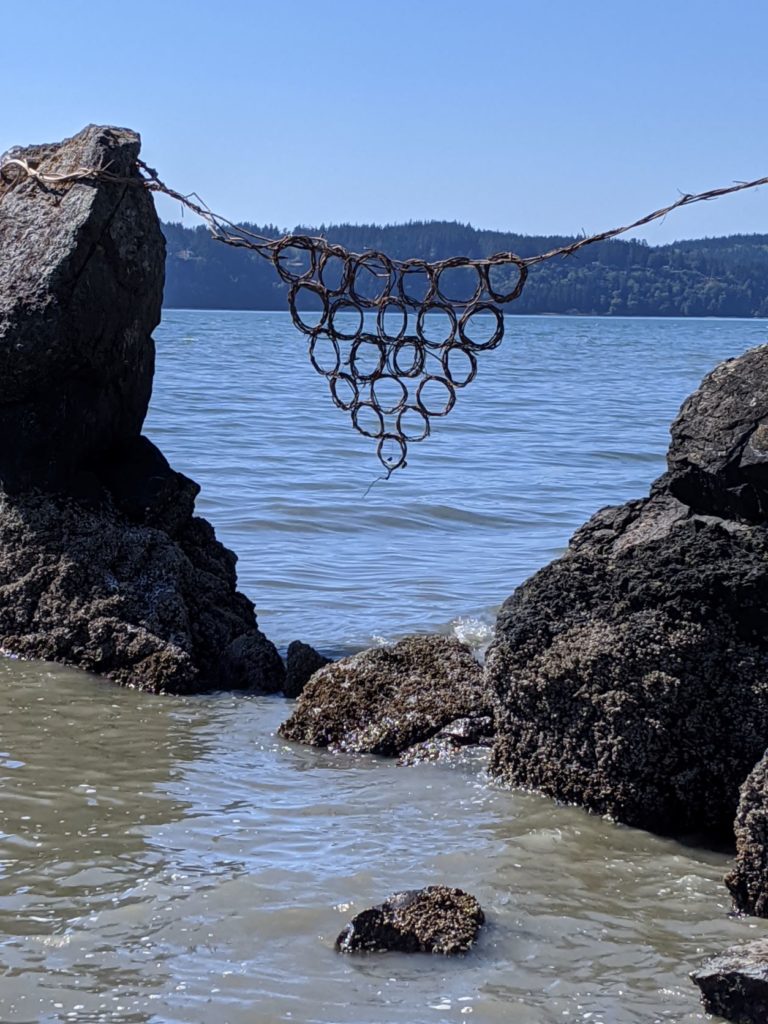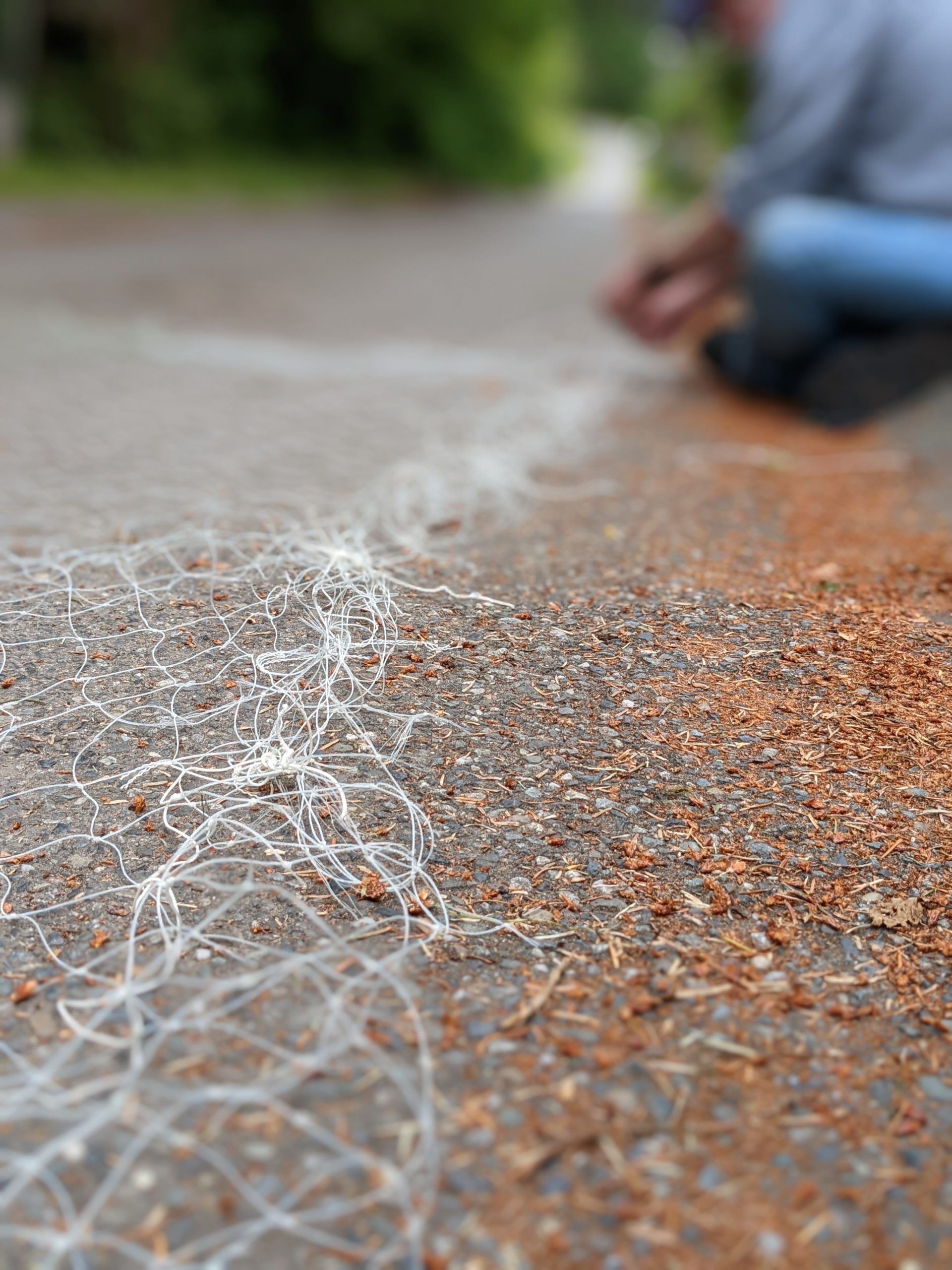I was intrigued by a post from my wonderful friend and colleague, Eva Schiffer, on LinkedIn a while back. Coming off a conversation with the creative Gianluca Gambatesa, Eva quoted him with something that opened up a lot of questions in my mind about power. Gianluca said “There is a tight link between power structure and infrastructure. By making infrastructure more accessible, we can destabilize and open up power structures. Oh. So. Much. To. Unpack! Then Eva went on to ask for examples.
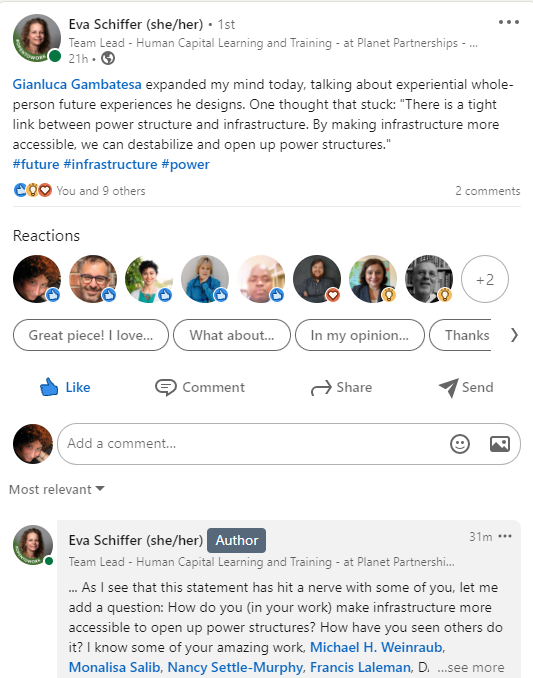
Before I can mine examples, I want to understand what we mean by infrastructure and power structure. In my group process work most often the aim is to distribute power out to engage everyone and support work that distributes agency and responsibility across a group. It is rarely a goal to destabilize power, but to distribute it. So the idea of “opening up” power structures resonates.
Decision making can be a good place to test ideas. In practice that might look like clarity of decision making (as opposed to fake consultation – I’ll listen to you but I already made up my mind), clarity of how power is exercised and by whom in decision making processes. Power structure is expressed in this case by who makes what decisions, how they are communicated and enacted.
So what is infrastructure in this case? In the LinkedIn thread most references were to collaboration tools: Google drive, Slack, etc. Accessibility to tools requires they are available, properly configured to distribute control of the tools, backed up so useful experiments don’t risk mass destruction of stuff, and skills for people to use those tools. Who can choose and mess with the tools is super important – something we learned in our research for Digital Habitats.
I immediately wondered about the role of transparency of tools, how they are configured and who controls them as one sort of accessibility. There are other layers of accessibility: is a tool friendly for those who cannot hear or see? Is it free of embedded bias? Are the use practices built on shared values and goals or is it a free for all? My bias here is finding the sweet spot between over control and under control. For a diverse group, is the tool accessible ENOUGH to allow access and support diversity? Eva, in a latter comment, noted “Transparency is part of it. But also: Does this structure make it easy for me to fully contribute if I’m not highly privileged?”
That takes us to the less visible side of tools-as-infrastructure – the processes we use with the tools, each other and our shared work. Who has the power (there is that word again) to, as Eva called it, “fully contribute” regardless of one’s priviledge and power.
Process is infrastructure. Lack of process is infrastructure. Workarounds to avoid or change process is part of infrastructure as far as I’m concerned. Yet it is rarely noted in ones “infrastructure plans,” eh? It is the place where power is exercised with little visibility, or perhaps little accountability.
Some other stuff:
https://www.forbes.com/sites/hbsworkingknowledge/2019/08/08/facebook-and-electio n-influence-will-history-repeat-itself/ Renee Diresta gave a superb talk at Long Now about the difference about social media which Long Now retweeted about: "When people say propaganda has always existed, they're absolutely right. But what has not always existed is inexpensive, sophisticated, precision targeting." - Renee DiResta (@noUpside) on how social media algorithms help spread propaganda on altogether new scales. https://twitter.com/longnow/status/1518706648730140672
